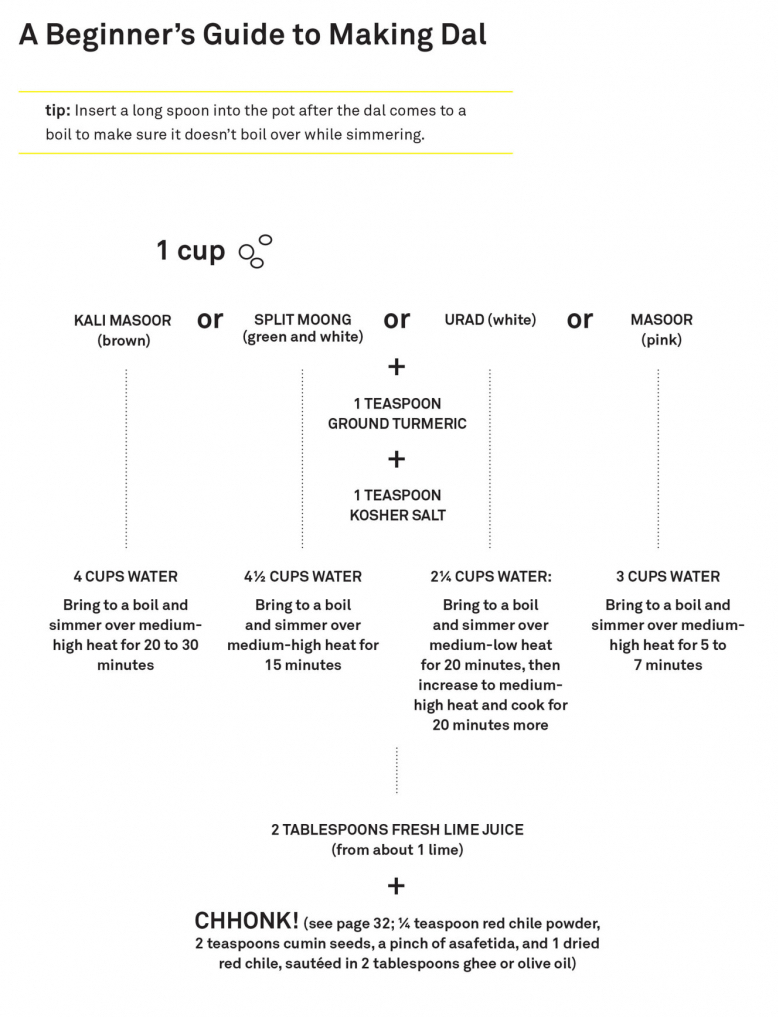I’d be lying if I said that cooking the recipes in Priya Krishna’s Indian-ish with my mom had been my plan all along. The truth is I had planned to cook these recipes on my own, in my own kitchen in Indiana, with my own equipment. What actually happened: in light of a family emergency, I took leave from my bakery job and traveled home to be with my mother and the rest of my family. I didn’t know how long I was going to be gone, so, alongside my clothes, a copy of Crazy Rich Asians and two poetry collections, I packed Indian-ish into my suitcase.
***
In her foreword to Indian-ish, Padma Lakshmi writes, “This cookbook is really a love letter from Priya to her mother, and when you peruse the pages, you will see why.” Ritu, Priya Krishna’s mother and the source of most of the Indian-ish recipes, is a badass. Priya writes: “My mom grew up in India at a time when women weren’t expected to pursue a career other than being a mother. Instead, she moved to America, married my dad … put herself through college by folding clothes at Sears, and became a software programmer and eventually the manager for an airline software company — a job that allowed her to pursue her dream of traveling the world.” While she didn’t learn how to cook growing up, she began cooking in the United States, armed with PBS cooking show techniques and the memories of both watching her grandmother cook and her favorite meals from her travels, along with the requests and tastes of her American-born daughters.
***
Much like Ritu Krishna, my mother didn’t learn how to cook growing up. She learned how to cook in Hong Kong as a domestic worker and when she came to the United States, married my dad and had me and my two younger brothers. My mom learned how to make lumpia (Filipino eggrolls), pancit canton (Filipino noodle and vegetable dish), adobo and so many other staple dishes from the Filipina friends she found in rural Nevada. The rest she learned from cookbooks, neighbors and her mother-in-law (my grandmother).
I am realizing that my mom’s stir-fried beef with onions is a version of Korean bulgogi. Her much-requested cheesecake is adapted from a neighbor’s recipe. Her siopao (steamed buns) is the result of years of experimenting with different dough and filling recipes and finding the ones that she likes the best.
***
Something that I find interesting about Indian-ish is that the words “immigrant” or “immigrate” are only used once or twice throughout. Choosing to frame the content of the cookbook around family anecdotes, food inspirations and a love of flavor rather than an explicitly immigrant narrative, redefines what a modern American family looks like. It makes Indian-ish infinitely accessible and relatable in a way that demystifies specifically Indian flavors and techniques. It also works to de-otherize immigrant narratives and food, to make them as normal and everyday and American as a backyard barbecue.
***
My mother has never eaten Indian food before. Even though she worried that what we cooked might be too spicy for her, we sat down together one night and put Wonder Woman sticky note tabs on every page in Indian-ish that caught my mom’s attention: Mushroom-Stuffed Mushrooms, Roasted Aloo Gobhi, Garlic-Ginger Chicken with Cilantro and Mint, Shikanji (Indian Gatorade), Roti Noodle Stir-Fry, Warm Cumin, Asparagus, Tomato and Quinoa Salad. Every time I thought we were done, she would see something else and ask, “What’s that?” Her next questions would be, “What’s in it?” and “Is it hard to make?”
***
When you open Indian-ish, the first sentence you see is, “This is not your grandma’s cookbook.” You are warned at least two or three times throughout the foreword and introduction that if you’re looking for more traditional or regional Indian cuisine recipes, you won’t find them in this book (but you are given suggestions for finding what you’re looking for).
A greatly abridged list of what you will find in this book:
- An FAQ, which includes questions like, “Why are there no curries in this book?” and “What are your thoughts on peeling things?” and “If a recipe calls for ‘ghee or olive oil,’ what’s better?”
- Essential how-tos [how to cook rice, how to boil potatoes (both in the microwave and the stove) and so on]
- An immensely useful spice guide, which provides you with spice names, their aliases, what they taste like, where you find them, how you use them, and what you can use as a substitute (all of which are particularly helpful when you’re buying ingredients in rural Nevada or southern Indiana where things like amchur, asafetida and black mustard seeds are impossible to find)
- A lentil guide that’s structured similarly to the spice guide
- Tutorials on Indian cooking techniques like chhonk and making your own dal
- Mini-essays from both Priya Krishna’s mother and father
- A wine pairing guide to go with the dishes in the book
- Choose-your-own-cooking-adventure charts
- Original illustrations from Desi pop artist Maria Qamar (also known as Hatecopy)
I’m only scratching the surface of all the things in this cookbook that make it so visually pleasing to flip through and that kept both my mom and me sticky-tabbing more recipes.
***
These days, my mom judges a recipe by how many ingredients it requires and how many steps are involved. Too many of either component and she hands the recipe off to me to cook because I’m younger and have more patience and time. Out of the 10 recipes we bookmarked, we chose three to prepare together: Roasted Aloo Gobhi (Potatoes and Cauliflower), Mushroom-Stuffed Mushrooms and Garlic-Ginger Chicken with Cilantro and Mint.
When we cooked the recipes, it went like this: my mom and I chopped and prepared the vegetables and other ingredients together, and then she watched me do the cooking or roasting. It was a reversal of our typical cooking sessions together, in which I help prep the ingredients and then watch her put everything together, taking notes as we go along. For the Indian-ish recipes, we both learned, made observations, took notes about what we liked and what we wanted to do differently next time.
The Roasted Aloo Gobi went perfectly — the only thing we’ll do differently next time is roast the potatoes and cauliflower a bit longer to get them a little more charred and crispy to bring out the flavors of the cumin, turmeric and ginger more.
Because my mom loves mushrooms and thought the 16 small white button mushrooms that the Mushroom-Stuffed Mushrooms recipe called for was too few, we doubled it (maybe even tripled it). As we went, we figured out the best ways to remove the stems to hollow out as much of the mushroom caps as possible so we could stuff as much of the quinoa/chopped mushroom stem/onion/garlic filling in as possible. We learned that the quarter-cup of grated Parmesan cheese that the recipe calls for is indispensable (we realized too late that we had about half that amount) and adds just the right amount of saltiness and depth of flavor that’s needed to make these bite-sized treats perfection.
The Garlic-Ginger Chicken with Cilantro and Mint is part of a section titled, “One Chicken and Three Fish Recipes.” These are the only meat-centered recipes in the book, and my mom and I decided to go for the chicken. What makes this recipe different from many other chicken recipes is the cooking technique. After marinating the chicken breasts in garlic, ginger, mint, cilantro, olive oil, lemon juice and spices for two hours, you brown them on both sides in a pan, cover them and reduce the heat to low for 10 minutes, turn the heat off and keep the lid on, letting the breasts continue to cook for another 10-15 minutes. Ideally, the reward for your patience is perfectly cooked, juicy, tasty chicken breasts. What we discovered through cooking this recipe was that my mom’s meat thermometer was broken, so we ended up overcooking the chicken in an effort to make sure it was cooked to temperature. The end product was definitely tasty but rubbery and tough, which disappointed us so much.
***
When I finally made it back home to Indiana, I had some fresh okra from a friend’s garden and we were in the middle of a heat wave, so I decided to prepare a couple more Indian-ish recipes: Bhindi (Charred, Spiced Okra) and Shikanji (Indian Gatorade).
I prepped and cooked alone this time, with my mom all the way in Nevada. As I made the Bhindi, I thought about pinakbet, a Filipino stew that my mom makes for herself that has okra in it. I wondered how my mom would like this preparation of okra — charred and spiced on the stovetop and served over rice. As I squeezed the juice from six limes for the Shikanji, I wondered if she would think that all this juicing was too much work. After tasting the lime-y salty sweetness of Shikanji, I think she would say it’s a lot of work, but definitely worth it.
***
All throughout Indian-ish are photos of and anecdotes about Priya Krishna’s family: her mother, her father, aunties, uncles, siblings, cousins and in-laws. It’s clear that without each member of her family, this book would not be the vibrant, talky, flavorful guide that it is. Each recipe is a delicious inroad to Indian flavors and cooking that is accessible to the experienced (or inexperienced!) home cook and the sophisticated foodie and the Indian food newbie and everyone in between.
The other thing I love about this cookbook is how each dish is connected to a family member or a childhood memory or a family food story. In writing Indian-ish, what Priya Krishna ends up giving us is a food genealogy of a modern American family. It is not strictly Indian food, but a hybrid that applies Indian flavors, dishes and techniques to things like pizza and toast and baked potatoes and '80s-style American appetizers.
I love that I started out cooking Indian-ish recipes with my mom and was able to share the results with her and my dad over dinner. I love that we packed up leftovers and delivered them to my brothers and my mom’s food-loving friends. As my mom and I cooked these recipes, Indian-ish inspired me to look at my own family’s history and reflect on our own food genealogy.
***
Now, when I cook these recipes as I originally intended to — in my own kitchen in Indiana — it feels too quiet and a little bit lonely.
So after I tried the Garlic-Ginger Chicken recipe again but with chicken thighs and a working meat thermometer, I called my mom to tell her how it went.
A Beginner’s Guide to Making Dal is excerpted from INDIAN-ISH © 2019 by Priya Krishna with Ritu Krishna. Photography © 2019 by Mackenzie Kelley. Reproduced by permission of Houghton Mifflin Harcourt. All rights reserved.










Comments